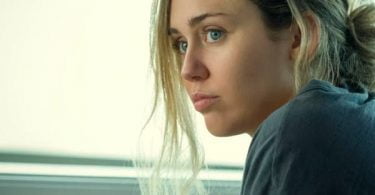“The cinema gives pleasure, certainly. But most of all for me, film-making is a journey into the impossible.
“The cinema gives pleasure, certainly. But most of all for me, film-making is a journey into the impossible. When I make a film I have to be like a military commander, in charge of every strategy and tactic, but I never really know where we are going.”
Claire Denis
Claire Denis is one of those directors who consistently offers adept insights into the functioning of humanity. Indeed, critics have been struck by the elliptical nature of Denis’s films, which present oblique events rather than open and closed narratives. Her works comment upon a more truthful film-world; characters are made up of incredibly intricate nuances, the cameras clinging on to their movements in an attempt to understand them. It is in this way that the works of Denis are incredibly lyrical; as she captures the minutiae of each character’s life she does not judge how they act or react, allowing them rather to move with freedom on the screen.
The themes of intimacy and apocalypse resound throughout many of the works of Denis, coming together to culminate in bleak, poignant masterpieces. 35 Rhums (35 Shots of Rum, 2008) is at once an intimate and stark portrayal of relationships within a small group of people as they consecutively grow closer and apart. As the tensions between the characters grow and fade, there is a sense that each individual lives for themselves only; they encounter each other without ever really connecting in a lasting and meaningful way. Denis shows humanity in this case as isolated, undeniably stalwart, and contained.
The most obvious case of this is when Lionel, Joséphine (who are father and daughter) and their potential love interests, Gabrielle and Noé, break down on their way to a concert and subsequently spend their night in a small restaurant. What ensues is a dance scene of sorts. As each character dances with the other, there is a kind of ‘baton-passing’ of emotional involvement. Initially, Lionel dances with Gabrielle- who is obviously and painfully in love with the former- as Joséphine looks on. Whereas the three characters appear at ease with the situation, Lionel and Joséphine seem more aloof; whilst their faces smile, they do so with a glazed, practiced expression. Although Gabrielle is in the moment with Lionel, he is somewhere else, encountering Gabrielle without really being with her.
The scene is both performative and transformative; after the first dance, Gabrielle is substituted for Joséphine, and Lionel is later substituted for Noé. In the action, Lionel and Joséphine merely ‘go through the motions’, acting as the situation requires them to. As the older couple dances and Joséphine looks on, it is only Gabrielle who seems content in the situation. Similarly, as the younger couple dances and Lionel looks on, Noé alone is not obviously uncomfortable with the situation. The characters in this moment act not as members of a close group, but irrevocably isolated individuals. Whilst they appear to come together, the act of attempted closeness serves as a marker of their distance, and subsequently pushes them further apart.
If the dance scene in 35 Rhums is about performativity and endeavoured intimacy, then the dancing at the end of Beau Travail (1999) is an entirely different enterprise. Whilst 35 Rhums comments upon intimacies within seemingly close-knit relationships, Beau Travail depicts the self-destruction of a Foreign Legion officer within a stiflingly intimate setting. Sergeant Major Galoup takes a questionable interest in new soldier, Sentain, letting his jealousy of the apparently untouchable recruit take over his life with disastrous consequences. Despite the fact that Galoup is an undeniable weasel of a character, Denis does not attempt to justify or comment upon his actions, presenting the character as isolated from any recognised rules of society. Again, Denis looks at humans apart from one another, observing their actions rather than questioning why they act in the way that they do.
Galoup’s self-destruction, then, is incredibly difficult to watch. Not only is he consistently resolute in his unmitigated jealousy for Sentain (who attempts on multiple occasions to get the former to like him), but also, Galoup is so contained that it makes it impossible to even begin to get close to understanding him.
Galoup’s final moments are unclear; as the film ends he is shown as either resolute in his isolation or about to kill himself. Indeed, one of the final shots is that of a vein in his arm, pulsating. It is not made clear whether this is an indication of Galoup’s will to live despite the austerity of his situation, or the final moments of his life. As a viewer, I chose the latter, and that it was made the final scene so moving for me. Whereas Galoup is presented as painfully contained during his interaction with other characters, whilst alone, he is able to release his pain. Unlike the dancing in 35 Rhums, which acts as an inhibitor for its characters, Galoup’s dance enables him to move on, from his relationships, from his world, from himself.
Denis appreciates Galoup as an individual unto himself, free from everything around him. In both films- indeed, in all of Denis’s films- she does not attempt to tie down her characters with a resolute ending. As Denis herself does not know where the film will take her, neither does anyone else. She can only attempt to show humanity at its most true. And boy does she do it.









